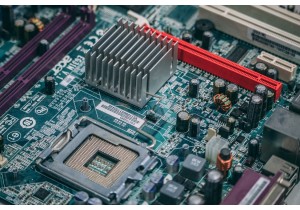High-power diodes are critical components in systems like electric vehicle chargers, solar inverters, and industrial machinery. Their thermal performance directly impacts efficiency, reliability, and lifespan. This guide explains how to evaluate thermal performance, industry trends shaping diode design, and practical steps to avoid common pitfalls.
1. Why Thermal Performance Matters
Poor thermal management causes diodes to overheat, leading to premature failure. For example, a solar inverter diode overheating in a desert climate can reduce energy output by 20%. Key consequences include:
-
Reduced Efficiency: Excess heat increases energy loss.
-
Shorter Lifespan: Operating above rated temperatures cuts diode life by half.
-
System Downtime: Failures halt production lines or EV charging stations.
2. Key Factors Affecting Thermal Performance
a. Diode Material
-
Silicon (Si): Common but limited to temperatures below 150°C.
-
Silicon Carbide (SiC): Handles 200°C+, used in EVs for faster charging.
-
Gallium Nitride (GaN): Efficient for high-frequency 5G base stations.
b. Heat Dissipation Design
-
Heat Sinks: Aluminum fins in EV chargers spread heat.
-
Thermal Interface Materials (TIMs): Thermal paste fills gaps between diode and heat sink.
c. Operating Environment
-
Outdoor solar farms face dust and humidity, blocking airflow.
-
Factory machinery vibrations loosen heat sink attachments.
d. Power Load
-
Diodes in data center power supplies run hotter during peak server demand.
3. How to Evaluate Thermal Performance
Step 1: Measure Junction Temperature
-
Tool: Infrared thermal camera or embedded sensor.
-
Example: A diode in a wind turbine converter reaching 170°C signals poor cooling.
Step 2: Calculate Thermal Resistance
-
Formula:
-
Simplified: Think of it as “how hard heat struggles to escape” (lower = better).
Step 3: Simulate Real-World Conditions
-
Software: ANSYS or COMSOL models heat in a server rack diode.
-
Testing: Bake diodes in a climate chamber mimicking desert heat.
Step 4: Monitor Long-Term Stability
-
Track temperature fluctuations over 1,000 hours in an industrial motor drive.
4. Industry Trends Shaping Thermal Management
Trend 1: Wide-Bandgap Materials
-
SiC diodes dominate EV markets for 30% lower heat loss than silicon.
-
GaN enables compact 5G power amplifiers with minimal cooling needs.
Trend 2: Miniaturization
-
Smaller diodes in drones require advanced TIMs to prevent hotspots.
Trend 3: IoT Integration
-
Sensors in solar farm diodes send real-time alerts for overheating.
Trend 4: Sustainability
-
Manufacturers prioritize recyclable aluminum heat sinks.
5. Product Advantages in Modern Diodes
-
Infineon’s SiC Diodes: Reduce EV charger cooling costs by 40%.
-
Vishay’s TO-220 Packages: Pre-attached heat sinks simplify assembly.
-
Wolfspeed’s Wireless Monitoring: Cloud-based thermal analytics predict failures.
6. Common Mistakes to Avoid
-
Ignoring Ambient Conditions: A diode rated for 150°C fails at 130°C in a sealed enclosure.
-
Overlooking Airflow: Dust-clogged fans in factory diodes cause heat buildup.
-
Mismatched Materials: Pairing a copper heat sink with a silicon diode wastes cost.
7. Future Technologies in Thermal Management
-
Diamond Substrates: Experimental diodes with 5x better heat conductivity.
-
AI-Driven Cooling: Algorithms adjust power loads to keep temperatures stable.
-
3D-Printed Heat Sinks: Custom designs for aerospace power systems.
8. Practical Evaluation Steps for Engineers
-
Define Operating Limits: Max temperature, power load, and environment.
-
Choose Measurement Tools: Thermal cameras for spot checks; sensors for continuous data.
-
Test Prototypes: Run diodes at 120% load to simulate worst-case scenarios.
-
Analyze Data: Use software to identify weak points in heat dissipation.
-
Iterate: Swap materials (e.g., SiC for Si) or add cooling fans.
9. Real-World Case Studies
Case 1: EV Fast Charger
-
Problem: Diodes overheated after 30 minutes, slowing charging.
-
Fix: Switched to SiC diodes + liquid cooling; temps dropped by 35°C.
Case 2: Solar Farm Inverter
-
Problem: Sandstorms blocked heat sink airflow.
-
Fix: Added dust filters + angled heat sinks; failures reduced by 60%.
10. Conclusion
Evaluating thermal performance in high-power diodes requires understanding materials, environment, and emerging technologies. With trends like SiC adoption and IoT monitoring, engineers can design systems that stay cool under pressure. Prioritize testing under real conditions, leverage industry advancements, and avoid shortcuts in thermal design. The result? Diodes that last longer, perform better, and cut energy costs.

